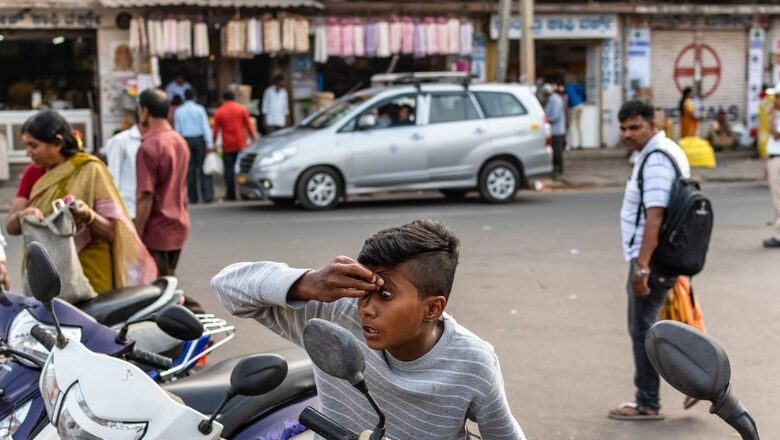
views
Although the current air pollution levels expose us to the risk of various chronic diseases, such as lung cancer, heart disease, stroke, and type 2 diabetes, it’s important to note that these conditions don’t manifest immediately — they often take some time to develop within our bodies.
What can occur immediately are eye problems. The common symptoms include itching, watery eyes, allergies, conjunctivitis (triggered due to air particles), blurry vision and dry eyes (due to prolonged exposure to pollutants).
The gloomy days with minimal sunlight and a thick cloud of smog — resembling an apocalyptic scene — immediately impact eyes. Those wearing contact lenses and children are more vulnerable to these effects.
Last week, Delhi recorded a 24-hour average air quality index of 468, categorising it as ‘Severe Plus’. At this stage, all emergency measures, such as restrictions on polluting vehicles and construction activities, were implemented and strictly enforced in the National Capital Region.
Considering the emergency scenario, many of us have been experiencing a burning sensation in our eyes. In fact, people at hospitals are now reporting issues like dry eyes, conjunctivitis, and eye discomfort marked by itching, redness, discharge, and eyelid swelling.
Unfortunately, in the coming days, especially around Diwali, doctors expect that such issues are expected to increase as AQI worsens further.
Long-term impact of air pollution on eyes unknown yet
Air pollutants like carbon monoxide (CO), nitrogen oxides (NOx), particulate matter (PM), and ozone (O3) primarily cause eye irritation and inflammation, with conjunctivitis being a common issue.
There are not many studies done to assess the impact of eye pollution on eyes. A study published in January 2022, conducted by researchers in Taiwan said in the past 30 years, no updated review has provided an overview of the impact of air pollution on the eye.
It said that ocular surface irritation, conjunctivitis and dry eye disease are the most direct results of air pollution.
However, chronic inflammation, oxidative stress, and toxicity resulting from air pollution can further cause cataracts, glaucoma, uveitis, retinal layer thinning, and macular degeneration.
Macular degeneration is a medical condition in which the central part of the retina, called the macula, deteriorates, leading to vision loss in the centre of the visual field.
The study, published in a peer-reviewed journal, the International Journal of Environmental Research and Public Health, said that further research on the association between air pollutants and eye-related disorders is needed to improve the understanding of exposure patterns and visual effects. “Such studies will help determine the long-term impacts of air pollutants on the eye, which are currently unknown,” it said.
Increasing complaints at hospital OPDs
Dr Sanjiv Gupta, director and senior eye surgeon, i Care Centre, New Delhi, told News18 that “the rush of patients has gone up by 10-15 per cent and Diwali is still a week away”.
He said of every ten patients coming due to symptoms triggered by pollution, two to three are children.
Similarly, Dr Aparna Gupta, an ophthalmologist at Max Healthcare, Gurugram, said cases of eye pain, watering, dry eyes and allergies have significantly increased over the past two weeks.
“On a scale of 1-10, I have been seeing two to five patients daily of which some are children as well,” Gupta said, adding that she is a retina specialist and deals with more specialised cases. “The crowd will be more at general ophthalmologists.”
Dr Anita Sethi, head of ophthalmology at Fortis Hospital, Vasant Kunj, also explained a similar trend where half of the patients are coming with complaints of burning, watering and itching.
“The pollution-induced increase in the particulate matter in air, and the presence of allergens like pollen due to the change in season, are the main culprits. There has been an increase in the number of patients with eye issues like burning, watering, itching etc. In fact, more than 50 per cent patients have these complaints.”
I tried to check the trend with Delhi’s largest public hospital, Dr RP Centre for Ophthalmic Sciences, AIIMS. However, Dr Radhika Tandon, professor of ophthalmology, said there is no relevant data available right now as cases are not segregated based on their location.
“As we get patients coming from all over the country and with many complex and difficult cases which are not directly impacted by the current status of air in Delhi, perhaps there has been no noticeable change in the pattern of cases presenting over the past two weeks.”
What to do?
The tips for prevention include wearing protective glasses and computer glasses whenever going outside. Experts also suggest washing of eyes with cold water on a regular basis and avoiding wearing contact lenses.
The use of lubricating drops is also suggested if prescribed by your doctor.
Also, don’t delay visiting a doctor if you are witnessing symptoms as it may progress into severe conditions, considering the toxic air around us.
Try to stay in an air-purified room as long as possible. If you are still unsure about what you should look for before buying an air purifier for your room, look for the latest HEPA filter and Clean Air Delivery Rate (CADR) as the two most important factors.


















Comments
0 comment